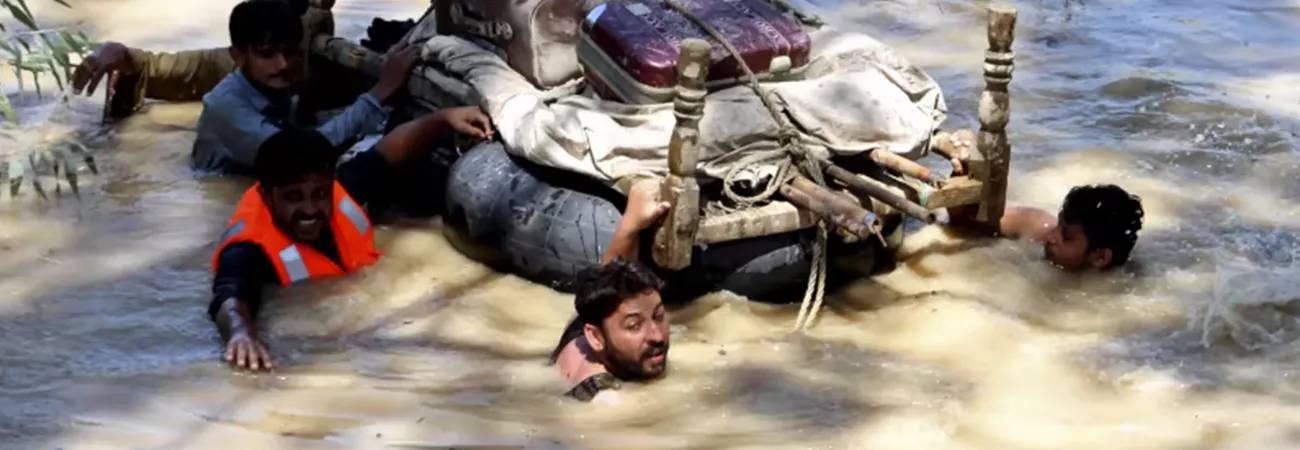i NEWS PAKISTAN
The death toll from monsoon flooding in Pakistan since June has reached 1,061, according to figures released Monday by the country National Disaster Management Authority. It said 28 people had died in the previous 24 hours, but authorities were still trying to reach cut-off villages in the mountainous north. The annual monsoon is essential for irrigating crops and replenishing lakes and dams across the Indian subcontinent, but each year it also brings a wave of destruction. Officials say this year monsoon flooding has affected more than 33 million people -- one in seven Pakistanis -- destroying or badly damaging nearly a million homes.
The NDMA said more than two million acres of cultivated crops have been wiped out, 3,457 kilometres (about 2,200 miles) of roads destroyed, and 157 bridges washed away. Prime Minister Shehbaz Sharif today will visit the flood-hit Nowshera and Charsadda cities of Khyber Pakhtunkhwa to review the ongoing rescue and relief activities there. During the visit, the authorities concerned would brief the prime minister about the damages caused by floods and the relief operation. Besides reviewing the relief work, the prime minister would also interact with the flood-affected people there. Moreover, he would also visit the site of Mohmand Dam where he would be briefed about the progress on project’s execution.
A huge relief operation was under way and international aid began trickling in as Pakistan struggled to deal with monsoon flooding that has affected more than 33 million people. Officials said 1,061 people have died since June when the seasonal rains began, but the final toll could be higher as hundreds of villages in the mountainous north have been cut off by flood-swollen rivers washing away roads and bridges. Climate Change Minister Sherry Rehman called it "the monster monsoon of the decade. This year floods are comparable to 2010 -- the worst on record -- when more than 2,000 people died and nearly a fifth of the country was under water. Near Sukkur, a city in southern Sindh province and home to an ageing colonial- era barrage on the Indus River that is vital to preventing further catastrophe, one farmer lamented the devastation wrought on his rice fields.
Millions of acres of rich farmland have been flooded by weeks of non-stop rain, but now the Indus is threatening to burst its banks as a result of torrents of water coursing downstream from tributaries in the north. Our crop spanned over 5,000 acres on which the best quality rice was sown and is eaten by you and us," Khalil Ahmed, 70, told reporters. All that is finished. Much of Sindh is now an endless landscape of water, hampering a massive military-led relief operation. There are no landing strips or approaches available... our pilots find it difficult to land, one senior officer told reporters.
The army helicopters were also struggling to pluck people to safety in the north, where steep hills and valleys make for treacherous flying conditions. Many rivers in the area -- a picturesque tourist destination -- have burst their banks, demolishing scores of buildings including a 150-room hotel that crumbled into a raging torrent. The government has declared an emergency and appealed for international help On Sunday, the first aid flights began arriving -- from Turkey and the UAE. The flooding could not have come at a worse time for Pakistan, where the economy is in free fall.
Credit:
Independent News Pakistan-INP









